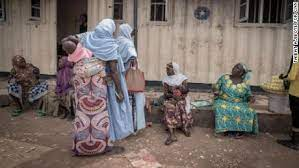Are the deposits now safe?
The short answer is that SVB did not have enough kontan to pay depositors so the regulators closed the bank.
Agen Bola Terpercaya
The longer answer begins during in the epidemi, when SVB and many other banks were raking in more deposits than they could lend out to borrowers. In 2021, deposits at SVB doubled.
But they had to do something with all that money. So, what they could not lend out, they invested in ultra-safe U.S. Treasury securities. The persoalan is the rapid increase in interest rates in 2022 and 2023 caused the nilai of these securities to plunge. A characteristic of bonds and similar securities is that when yields or interest rates go up, prices go down, and vice versa.
The bank recently said it took a US$1.8 billion hit on the sale of some of those securities and they were unable to raise capital to offset the loss as their persediaan began dropping. That prompted prominent venture capital firms to advise the companies they invest in to pull their business from Silicon Valley Bank. This had a snowball efek that led a growing number of SVB depositors to withdraw their money too.
The investment losses, coupled with the withdrawals, were so large that regulators had no choice but to sesi in to shut the bank down to perlindungan depositors.
Are the deposits now safe?
From a practical perspective, the FDIC is now running the bank.
It is distinctive for the FDIC to shut a bank down on a Friday and have the bank reopen the following Monday. In this case, the FDIC has already announced that the bank will reopen on March 13 as the Deposit Insurance National Bank of Santa Clara.
At the end of 2022, SVB had $175.4 billion in deposits. It's not clear how much of those deposits remain with the bank and how much of those are insured and 100% safe.
For depositors with $250,000 or less in kontan at SVB, the FDIC said that customers will have akses to all of their money when the bank reopens.
For those with uninsured deposits at SVB - basically anything above the FDIC limit of $250,000 - they may or may not receive back the rest of their money. These depositors will be given a "Receiver's Certificate" by the FDIC for the uninsured amount of their deposits. The FDIC has already said it will pay some of the uninsured deposits by next week, with additional payments possible as the regulator liquidates SVB's assets. But if SVB's investments have to be sold at a significant loss, uninsured depositors may not get any additional payment.



